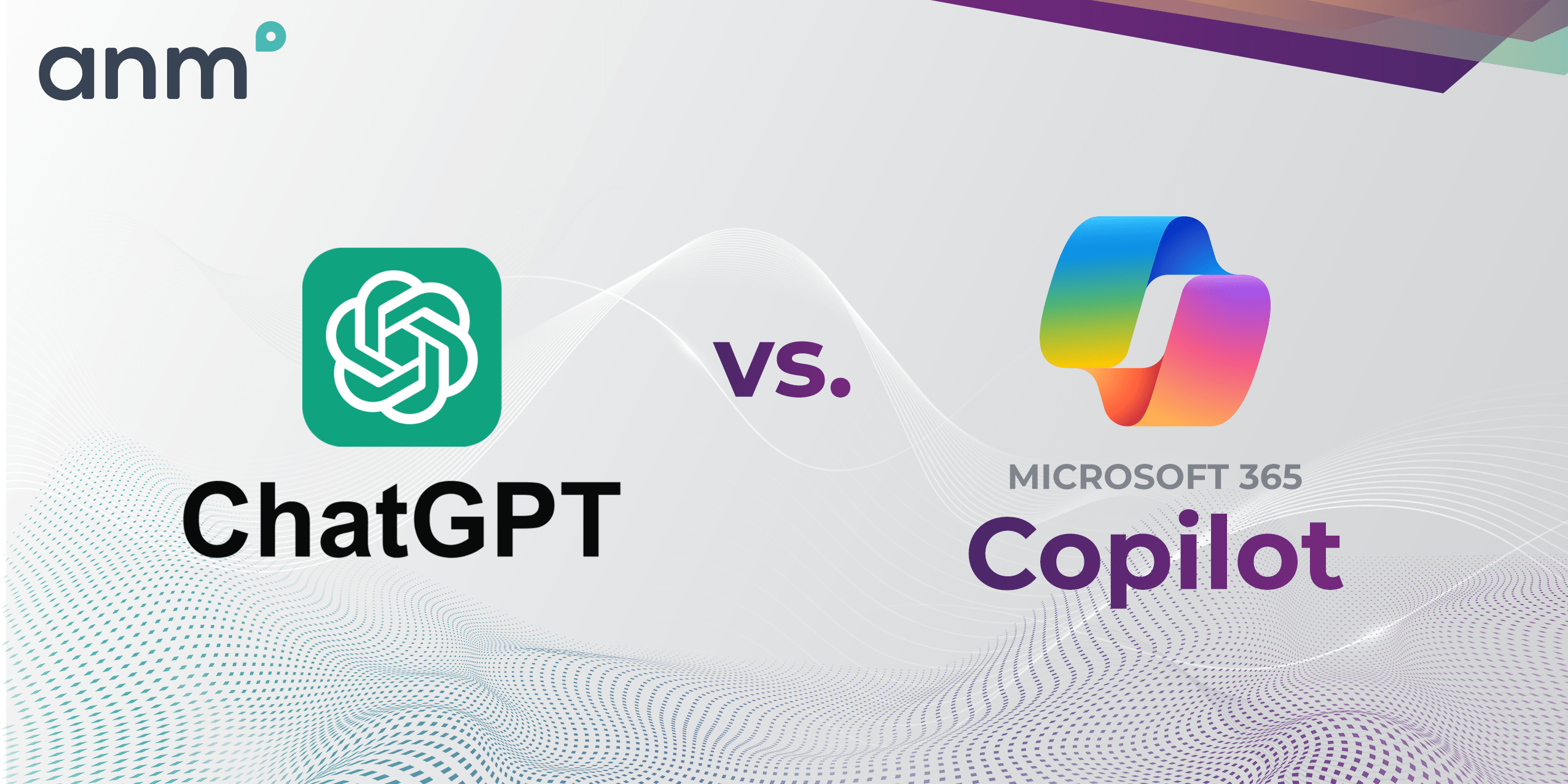ChatGPT vs. Microsoft Copilot – What’s the Difference?
Artificial Intelligence (AI) has rapidly evolved, bringing forth innovative technologies designed to enhance productivity and efficiency. Two prominent players in this field, ChatGPT and Microsoft Copilot, have garnered attention for their capabilities in streamlining tasks and activities. While both employ AI, understanding their unique features is crucial for maximizing their potential. In this blog, we’ll delve into the workings of ChatGPT and Microsoft Copilot, highlighting their distinctions and exploring how they can revolutionize your workflow.

ChatGPT: Conversations with AI
ChatGPT, developed by OpenAI, is a natural language processing technology that harnesses the power of machine learning, deep learning, and natural language understanding. Launched in November 2022, it operates as a chatbot, engaging in conversations to answer questions or respond to prompts in a conversational manner. The ‘generative pre-trained transformer’ (GPT) aspect signifies its extensive training on diverse human language data from the internet, making it versatile in its responses.
Tasks Handled by ChatGPT
ChatGPT works great across various tasks, such as composing essays, creating lists, describing art, writing code, summarizing content, crafting poems and song lyrics, and even building resumes. The more details provided in prompts, the more accurate and tailored its responses become. However, unlike search engines, ChatGPT lacks real-time internet access, potentially leading to inaccuracies or “hallucinations” in responses. Users are advised to review and edit the provided information, adopting a trial-and-error approach for optimal results.
Microsoft Copilot: Your Personalized AI Assistant
Microsoft Copilot has been gaining steam as an AI-powered digital assistant deeply integrated into Microsoft 365 applications. Unlike standalone tools like ChatGPT, Copilot combines large language models (LLMs) with user-specific data from the Microsoft Graph (pictured below), encompassing calendars, emails, chats, documents, meetings, and more. Operating seamlessly within M365 apps like Word, Excel, PowerPoint, Outlook, and Teams, Copilot transforms words into a powerful productivity tool.
Microsoft Copilot is designed to provide personalized assistance, helping users unleash creativity, unlock productivity, and enhance skills. By amalgamating language models with individual data, Copilot tailors its suggestions to align with the user’s specific needs. Whether it’s drafting emails, creating presentations, or organizing tasks, Copilot streamlines the workflow within familiar Microsoft applications.
Comparing ChatGPT and Microsoft Copilot
While both ChatGPT and Microsoft Copilot leverage AI, their primary distinctions lie in functionality and integration. ChatGPT operates as a standalone chatbot, excelling in generating human-like responses to various prompts. It is a public tool and uses all the prompts that are inputed into the system to further train the GPT engine. Data and conversations are stored for 30 days in memory with ChatGPT
In contrast, Microsoft Copilot seamlessly integrates with M365 apps, utilizing personalized data from what you have access to in your M365 tenant to enhance productivity and offer context-aware suggestions. It also brings a high level of security, not crossing tenants in the Microsoft customer base. Microsoft is a private GPT doesn’t store the conversations it has.
As UC Today puts it, “If you’re looking to upgrade your Microsoft ecosystem with AI, Copilot is the tool you need. If you just want to experiment with generative AI, pick ChatGPT.”
Conclusion
In the realm of AI-powered assistants, ChatGPT and Microsoft Copilot stand out for their unique contributions to efficiency and productivity. Whether you seek a versatile conversational partner or a seamlessly integrated assistant within Microsoft applications, understanding the strengths of each tool is essential.
As technology continues to advance, these AI assistants pave the way for a future where human-computer interactions are more intuitive, streamlined, and tailored to individual needs. Embrace the possibilities, explore their capabilities, and elevate your workflow with the assistance of AI.

Chris Hinch
Microsoft Practice Director
Fortifying Digital Identity: How to Secure Access, Prevent Breaches, and Stay Compliant
In today’s digital complexity, identity security has become a cornerstone of an organization’s cybersecurity strategy. With cyberthreats growing in sophistication, IT leaders are under increasing pressure to prevent unauthorized access, mitigate credential theft,...
Exchange Server On-Prem? Get Ready for CU15 and the Future of Exchange SE
If you're still running an on-premises Exchange Server, there's some important news for you: Exchange Server 2019 CU15 is still in development, and Microsoft is making sure it's as close to code equivalent as possible to the upcoming Exchange Server Subscription...
Strategic IT Spending in 2025: Maximizing Value Amid Price Hikes
In 2025, Gartner predicts global IT spending to increase by 9.8%, reaching $5.61 trillion. However, a significant portion of this growth is attributed to rising prices for IT products and services, which means that IT leaders must adopt more strategic approaches to...



